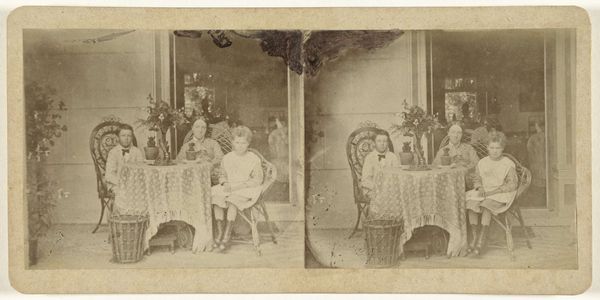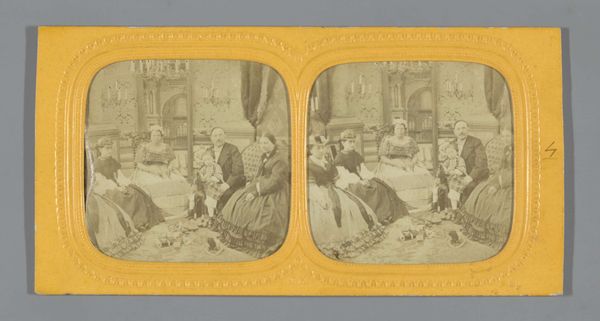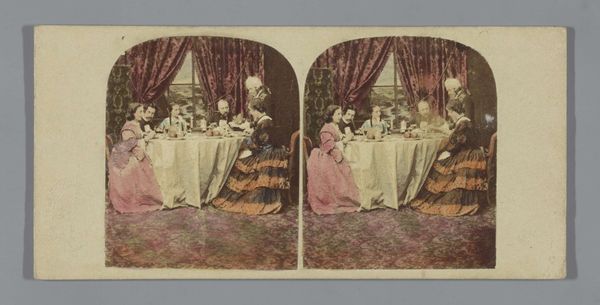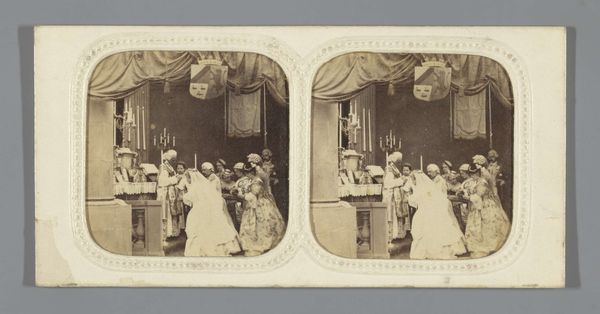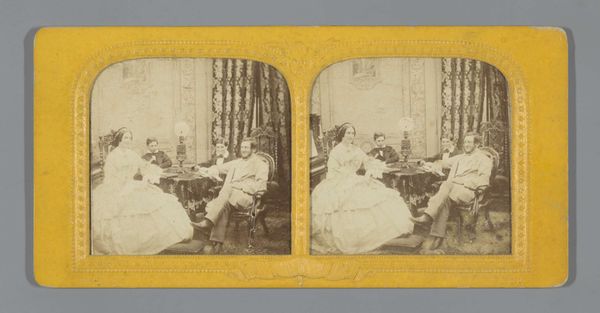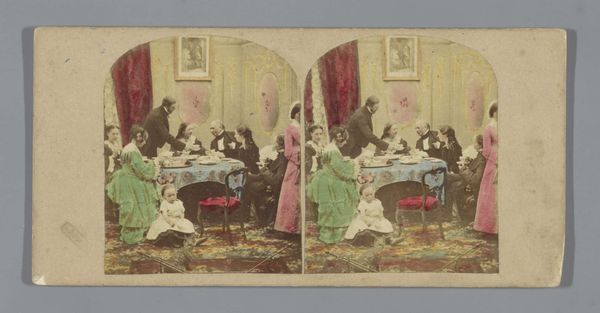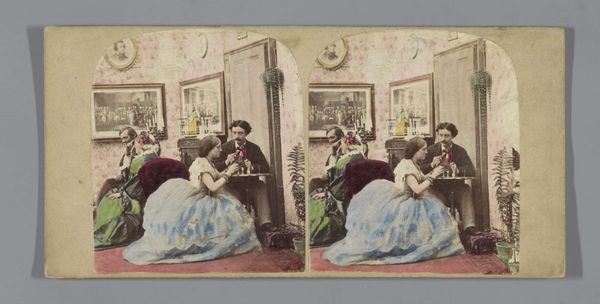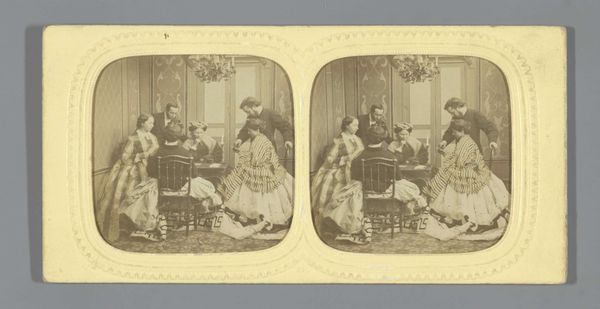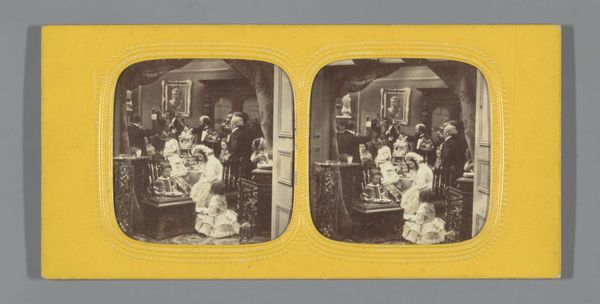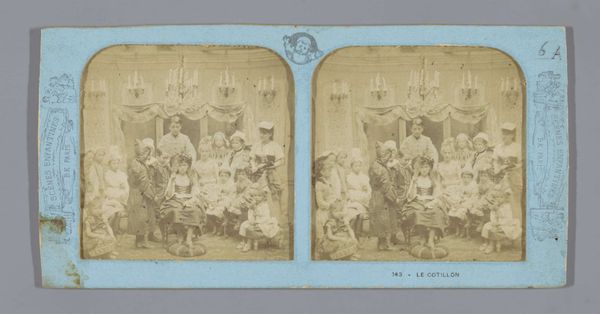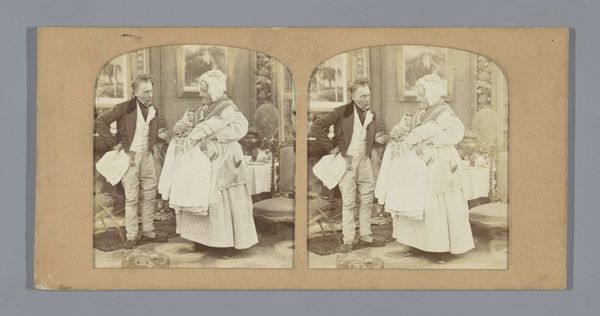
Vier meisjes en een jongen rond een tafel vol sieraden, op de achtergrond twee mannen c. 1850 - 1880
0:00
0:00
#
aged paper
#
homemade paper
#
paper non-digital material
#
pale palette
#
light coloured
#
white palette
#
personal sketchbook
#
watercolour illustration
#
paper medium
#
watercolor
Dimensions: height 85 mm, width 170 mm
Copyright: Rijks Museum: Open Domain
Curator: What immediately strikes me about this piece is the air of quiet industry surrounding a shared treasure, perhaps a collection of family heirlooms. Editor: Indeed. What we’re viewing is a photographic print titled “Vier meisjes en een jongen rond een tafel vol sieraden, op de achtergrond twee mannen,” dating roughly between 1850 and 1880 by Furne Fils & H. Tournier. It showcases a gathering around what seems to be a display of jewelry. I’m most drawn to the photographic process itself. It’s an albumen print, giving that unique sepia tone characteristic of early photography. Curator: The choice to highlight jewelry is interesting. It can signal not just wealth but legacy. Consider that jewelry can symbolize inherited power or the passage of tradition, carefully maintained in a time of upheaval. Editor: And what kind of labor produced such an image? Early photographic processes were highly technical and labor-intensive, a mix of chemistry and artistry. Think of the preparation of the glass plate negative, the precise timing of exposure… each print was a unique artifact born from a specific, skilled practice. The tangible, almost textural feel of the print suggests it isn't merely a flat surface; you almost feel the weight of the materials and the artist’s labor. Curator: The presence of both young girls and a young boy adds an interesting layer, suggesting the transmission of societal values related to status and heritage to a new generation. There are those in the background as well, gazing down on them almost reverently. What's being looked at is not just beautiful things but symbolic history. Editor: Absolutely. It emphasizes the commercial aspect too: documenting bourgeois affluence and creating lasting material testaments through accessible reproduction. How could having likenesses made increase consumption for items like jewelry? I mean, this one shows them off nicely, doesn't it? Curator: That's an intriguing angle, the photograph as a social signifier, both for those depicted within it, and those acquiring the photographic print itself. It preserves a vision of decorum that has weight even for a contemporary audience. Editor: Precisely! When viewing artwork, I want to focus on how the making shapes meaning. Understanding it’s origins makes one consider access, skill, and intent—how each part reveals layers that the image strives to contain. Curator: Considering the historical period adds even further dimensions, so looking into these visual treasures with fresh eyes has shown its enduring appeal! Editor: And for me, appreciating it comes down to the physical act and labor involved, turning something as simple as photographic printing into an art.
Comments
No comments
Be the first to comment and join the conversation on the ultimate creative platform.

